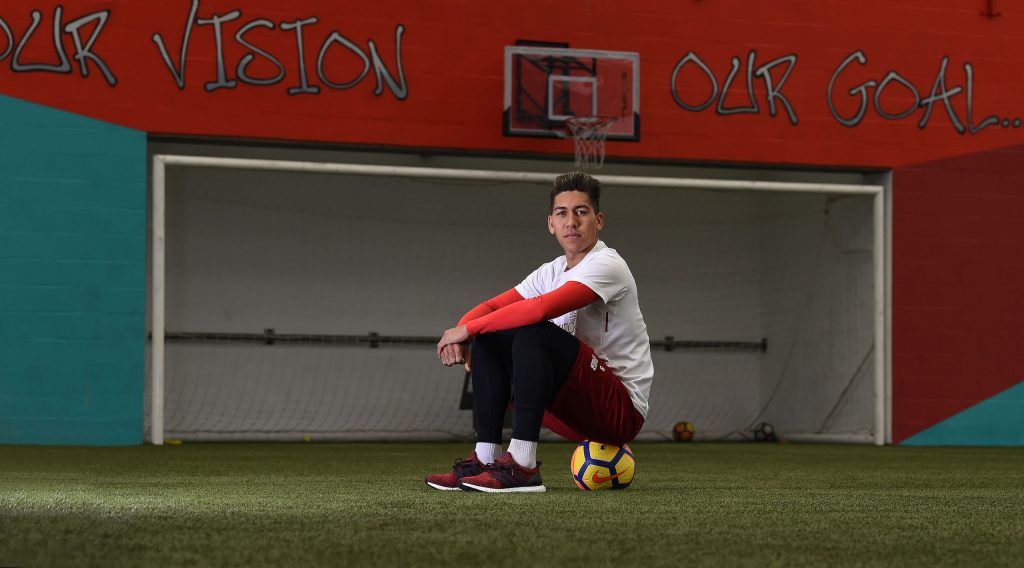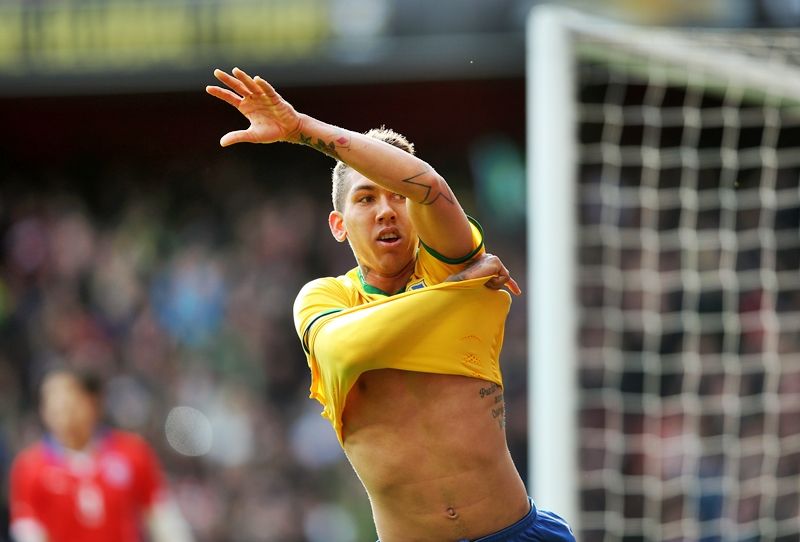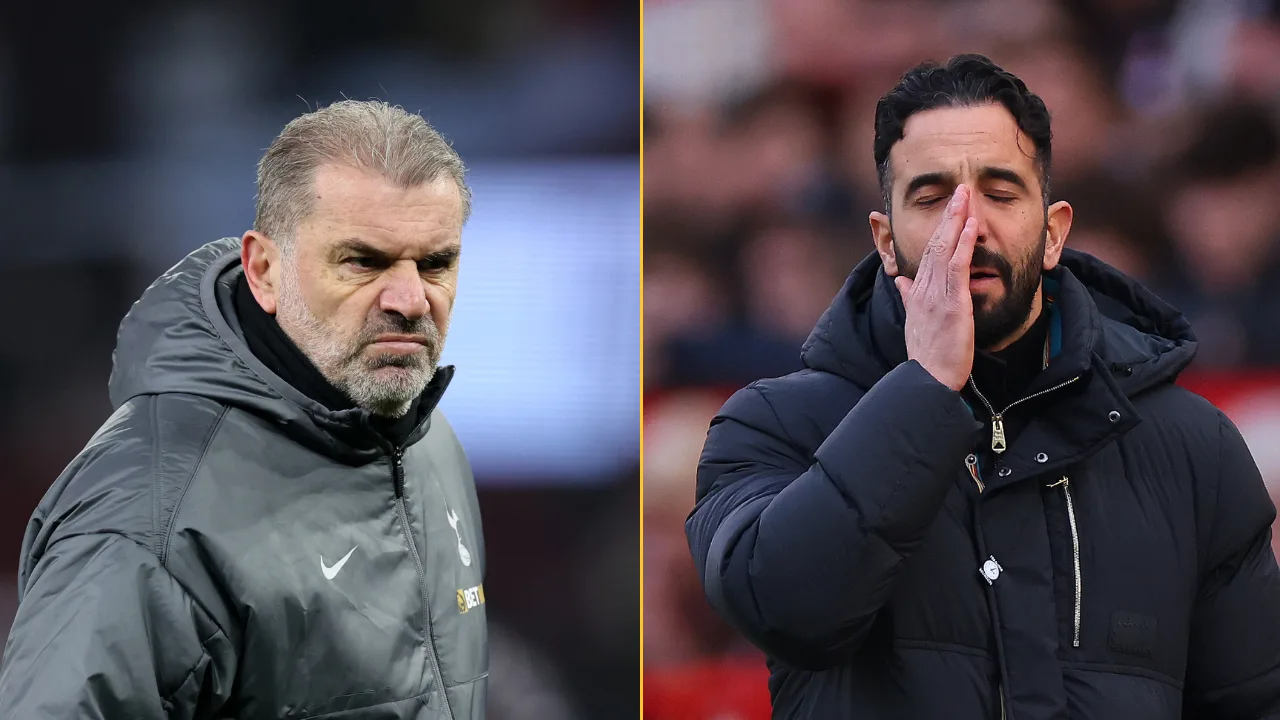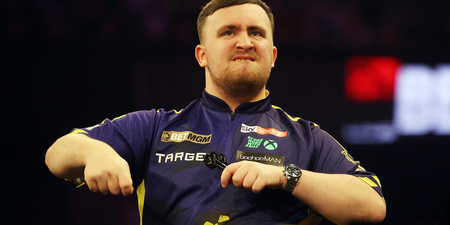By Melissa Reddy
As icy flakes curled in the unforgiving wind and caked Melwood’s exterior, thoughts within the training complex circled back to Roberto Firmino’s proficiency in more punishing conditions while at Hoffenheim.
Liverpool had wondered if an export from Maceio, a north-east city in Brazil with postcard-worthy beaches and a tropical monsoon climate, could hurdle glacial weather with the ease in which he muddled markers. That box, as with every other criteria during an exhaustive reconnaissance of the forward prior to pursuing him, was checked in the affirmative.
Reduced visibility and a snow-blanketed pitch during a blizzard at Augsburg in February 2015 proved no inconvenience to Firmino’s abilities; his usual blend of panache and function supplemented with a looped backward header. In the same month a year earlier, under a confetti of sleet, Stuttgart slipped and were stifled – not by the swampy Rhein-Neckar Arena surface, but the attacker’s intuitive movement and artistic mischief.
Each Hoffenheim goal in that 4-1 Baden-Wurttemberg derby victory had Firmino’s fingerprints on them; he crafted the first three before striking the final blow from the penalty spot in a performance that underlined how decisive he could be in and out of possession.
“It’s like he’s made of steel,” was part of Liverpool’s analysis on the Brazil international’s capacity to adapt to varying situations without a stir.
“It doesn’t matter what the weather is like, what the pitch is like, or even who the opponents are – Firmino plays in the same determined way. With his attitude, work ethic and desire alongside his varied abilities, he could become anything – there is no ceiling.”
Given such a finding, and the archive of Firmino’s excellence at Anfield since, it is easy to now appreciate Liverpool’s swiftness in concluding a £29 million deal for him in June 2015.
Rewind, though, and the fee was roundly condemned plus there was a perception that the business was based on impulse.

Such noise was simple to skip for those in recruitment – from the scouts, to the research team headed by the esteemed Ian Graham, through to the decision makers, who had scanned Firmino’s progress since his teenage years. There was collective confidence that it was a small investment for a player who had the potential to sizeably shape Liverpool’s attacking future.
The folder on the club’s “important player, connecting player, finisher, fighter and first defender” – to borrow Jurgen Klopp’s description – was created when he was still submerged under Brazil’s flooded supply line of footballers.
Fernando Troiani, Liverpool’s head of South American scouting, had sketched a profile on Firmino, who was first registered to Clube de Regatas Brasil before a failed trial at Sao Paulo led him to Figueirense aged 17. He was pinned as a skinny and skilful kid, who required plenty of development, but had endless promise.
That he could combine the illuminating football for which his country is famed alongside the more aggressive Uruguayan and Argentine influence picked up from his second club was of particular interest. Troiani, who works with Gonzalo Siegrist to canvas the region, had the inside track on Firmino – as is often the case – despite competition in the area from 27 other scouts who serve the Manchester clubs – 14 for City, with 13 representing United.
At that stage, the raw teen – guided by dentist Marcellus Portella – wasn’t a target for Liverpool, but a platform had been established for further analysis. That followed when Hoffenheim catapulted Firmino from Brazil’s second division to the Bundesliga shortly after his 19th birthday. Troiani’s notes were passed to the Reds’ German scout, Andy Sayer, as well as his Dutch counterpart Steven Aptroot, now at Feyenoord, who was keen on mapping the adaptation of South American players in Europe.
The latter watched Firmino in 2011 and 2012, scoring him highly, before Sayer prepared a more intense inspection early in the 2013-14 season. Initially, Liverpool’s admiration of the son of a street hawker was obstructed by the old UK work permit rules, which stipulated players needed to have featured in at least 75% of their country’s senior international matches over the previous two years.

Firmino’s showcasing of energy, intelligence, efficiency, work ethic and a unique multi-functionality made him too interesting to ignore despite the red tape.
Sayer continued the surveyance and kept in touch with his agency, ROGON. Liverpool, as with any other potential target being monitored, watched the attacker in blocks of 15 games or more rather than sporadically to properly ascertain his faculty to solve fresh problems on a match-by-match basis.
They mined deeper still, consuming a diet of his training routines to assess how he conducted himself in the workouts as well as how he interacted with the coaching staff, his colleagues, and the supporters that attended open sessions.
“He impressed me with his work rate and attitude,” read one observation after an 80-minute practice. “He worked hard without the ball and defended well in the overloads. He trains with a smile on his face and was the first of the players across to sign autographs and have his picture taken with a group of disabled fans.”
Whatever they looked for, the Anfield side found it in Firmino. Three scouts had motioned for him, the research team constantly referenced his numbers and stylistic compatibility so by the time he’d earned the status of Bundesliga Breakthrough Player of the Season in 2013-14 to attract their Manchester rivals, Liverpool long held the informed edge.
Brazil, too, had finally cottoned on to the tattooed maverick capable of executing overhead kicks and no-look finishes as well as thieving possession and tracking back with equal aplomb. In October 2014, Firmino received his first call-up for the friendlies against Turkey and Austria, getting off the international mark from 25 yards with a swerving stunner against the latter. “I asked him what he would bring to the team and told him he smelled of goals,” former Selecao boss Dunga declared post-match.
“He sees the goal like few others. When we call upon the players we have an observation to study of each them. Then, obviously it depends on what the player does on the field. He proved himself.”

Brazil had come to the same conclusion as Liverpool’s recruitment team: Firmino, while being a supremely gifted playmaker with the tools to operate wide, had all the weaponry to thrive as a No.9.
His supreme orientation as well as natural tendency to receive possession, face forward and open up the pitch up immediately, marked him as a smart option centrally.
Firmino had bulked up by 2014-15 through extra sessions with a personal trainer arranged by ROGON, making him even more of a conundrum to opposition defenders. That increased physicality sat alongside his robustness – he started 33 of a possible 34 games in his final two Bundesliga seasons – as further reasons for Liverpool to label Hoffenheim’s No.10 a priority. With the work permit rules relaxing in May 2015 and then-manager Brendan Rodgers after a flexible forward, the focal point for the recruitment team’s presentation was obvious.
Sporting director Michael Edwards (director of technical performance at the time), Dave Fallows, the head of recruitment, and chief scout Barry Hunter had turned to the tower of evidence their department had amassed suggesting Firmino could not only comfortably meet, but exceed expectations at Liverpool.
That was further cemented when negotiations were underway with Hoffenheim, through former chief executive officer Ian Ayre, and the Reds were granted permission to speak to the player, who enthusiastically listened to their pitch, chipping in with questions and his own homework on the club.
Firmino wanted the switch, but Hoffenheim wanted more than was originally anticipated. Liverpool trusted their groundwork and believed the right decision on the right player was more fundamental than external feelings over cost. And while no transfer is ever accompanied by guarantee of success, much of the risk can be scalped with a meticulous, all-encompassing scouting process.
Even through Firmino’s scratched early months on Merseyside, when Rodgers opted to use Christian Benteke as Liverpool’s axis instead, there was conviction that the audience would eventually witness his rare genius.
Klopp, who had the benefit of studying the Brazilian’s craft in Germany, quickly concluded the attack would reach its optimum funnelling through the 26-year-old he rates as “world class pretty much every day” after taking charge in October 2015.
With Firmino already on 22 goals for the campaign, registering the most prolific season ever by a Red in the Champions League, and belatedly drawing widespread ovation as the theory that he should be Brazil’s No.9 at the World Cup swells, those least surprised are the ones instrumental in bringing him to Liverpool who forecasted this outcome.
In-between Atletico Madrid’s Antoine Griezmann tweeting about his brilliance and Marco Reus celebrating Borussia Dortmund goals by mimicking Firmino’s celebrations as an ode, with Sadio Mane doing the same closer to home, talks have been progressing well over fresh terms for the Kop’s beloved ‘Bobby.’
The words “he could become anything – there is no ceiling” are still as relevant as ever to Firmino, and having been so entwined in his development for so long, Liverpool are determined to ensure it continues under their watch.
*This story was originally published on JOE.co.uk
The FootballJOE quiz: Were you paying attention? – episode 10
RELATED ARTICLES






MORE FROM Sports Joe
























MORE FROM Sports Joe






















